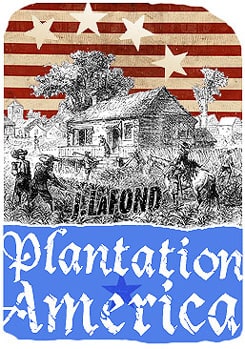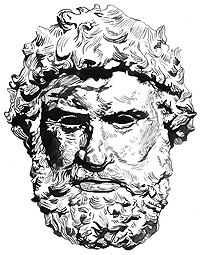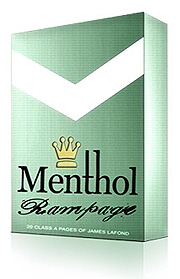I was reading the Combat Shooting part of "USMC Kill or Get Killed" and thinking of the pistol duels of yore. The contenders never adopt today's LEO's favorite two-handed, frontal stance, but rather a single-handed, lateral body one. Given both speed and accuracy determine the winner, wouldn't this give pause to the modern sights-based approach to self-defense?
Cutting back to the dueling pistol stance, see Olympic "rapid fire" @ 08:08 where the aim comes from body rotation with fixed arm. (Interesting, potentially important point about dry firing for the budget-constrained, @ 12:15)
-Bob
Mister Bob, I am no pistoleer, indeed have missed 7 of 8 shots at a paper plate 5 paces off. I have, however, read three books on pistol dueling, the best being Paul Kirchner’s wonderfully illustrated Dueling with the Sword and Pistol: 400 Years of One-on-One Combat.
I have often wondered about the fact that police are taught to shoot at center mass and that their stance for achieving this is to stand with center of mass fully exposed, as well as both shoulders. The lead-slinging posture I have seen so much in competition, training videos and police footage seems suicidal, like Japanese swordsmanship, with no regard for defense.
Consulting my fencing manuals I see oblique postures with the hand on the rear hip and even a perfectly narrow posture with hand the fist and forehand of the left hand held across the lower back. I have seen one illustration with the rear hand brought forward as bullet catcher, which seems quite unusual.
Pistol dueling became insanely lethal during the late 1800s and early 1900s in Germany, with the use of modern pistols rather than smoothbore dueling pistols.
I would recommend the duel towards the end of the 1970s movie Barry Linden as an affair, though certainly atypical, illustrative of some of the conventions and psychological issues involved.
I would close with an armchair recommendation for Dirty Hairy style pistol exchanges and a story of one dwarf duelist who was much to be feared, as he stood only 18 inches tall.
In 1643, Queen Henrietta Marie, elevated Jeffery Hudson to her guard, an 18 inch tall dwarf who was the target of many goads and insults.
A full-sized courtier, Charles Crofts, provoked the dwarf in the following year and accepted the terms of the duel suggested by Hudson, that they duel with pistols from horseback, beginning 100 yards from each other. Of course, the horse’s head was larger than Hudson, so Croft could not get a shot and was promptly plinked in the head by Hudson, who was then banished from the Queen’s court.
With so much care taken by combat infantrymen with rifles to take cover at ranges accessible by their weapon, it is incomprehensible to me—as a blade fighter—that one would not present a narrow, rather than wide target, and also take the heart and descending aorta off line, at least interposing the left side and the bent arm as a shield. Note that when not firing duelists kept the arm bent as a guard for the torso. But even with the arm extended the gun hand and forearm could receive the round rather than the neck.
Of course dueling is not the chaos of combat and perhaps the defensive value of the open pistol shooting posture is meant to take advantage of cars as shields and to make up for the startlingly few rounds police expend in zeroing and practicing with their service weapons. When I discovered that the Navy SEALs expended more small arms ammunition in training than the entire U.S. Marine Corp, I was reminded that the cops I knew hardly ever practiced with their weapons. I then assumed that this suicidal stance had the following implications:
1. That the training was focused on satisfying the state’s application of accurate fire upon its enemies at the expense of its officer’s safety.
2. That untrained and unarmed or at least not gun-armed antagonists are assumed,
3. To facilitate more control of the spread in order to minimize civilian casualties, as the more defensive-minded firing habits of spraying and praying hoodrat gunman take a notoriously high toll of bystanders.
Jeremy, LaMano and other pistol enthusiasts are welcome to enlighten us as to the purpose of not promoting narrow shooter profile.
Being a Bad Man in a Worse World
Fighting Smart: Boxing, Agonistics & Survival











Thanks for the reply. I remember well both Barry Lyndon duels. Not getting hit obviously trumps hitting. (One wonders whether Captain Quinn would have done any better with a two-handed aim, or did convention forbid this?).
youtube.com/watch?v=6bos2ZTGNZc
Maybe nowadays body armor allows for a change in profile in the quest for target accuracy.
In this clip the policeman adopts the standard two-handed aim and kills the charging victim, but not before sustaining two stab wounds. Given the range, I wonder whether it wouldn't be better to shoot from the hip and the use front arm to deflect or at least take the cut rather than the trunk. (No disrespect to this officer, of course).
youtube.com/watch?v=qD7BYnKr_js
Anonymous Conservative wrote a highly-motivating analysis of the legendary Depression-era pistolero, Jelly Bryce. This article should be re-read any time you feel your T-count slipping.
anonymousconservative.com/blog/jelly-bryces-shooting-stance
G.Gordon Liddy was mentored by a couple of old-school Southwest gunfighters during his FBI career. They both advocated a Bryce-like approach to the problem, as well.
From what I have heard, modern police pistol training is conducted for the sole purpose of satisfying the state qualification standard, and combat effectiveness has no bearing on the matter whatsoever.
The cops that I know are required to go the range four times a year. (This seems like considering yourself a "trained" boxer if you go to the gym and hit the bags—but never spar—four times a year.) What they do is fire the state qual course each quarter, which is conducted in broad daylight, at known distances, with no movement or athleticism involved. Even graveyard cops don't "qual" at night, no one shoots at or from vehicles, there's no blending of empty-hand techniques with gunplay, they don't do force-on-force with paintballs, etc. etc. As near as I can tell, the only result of this "training" is to ensure that the cops can get their weapon out of the holster without dropping it, and also to do an inventory check to make sure that no one has sold off their ammo or let their gun rust into immobility.
If this ineptitude results in a dead cop, the Admin certainly doesn't care, because there will be 100 applicants ready to take his place. The Chief and his acolytes will be able to stand manfully at attention during a big maudlin funeral while the TV cameras record them looking stalwart in their Class A's. As far as TPTB are concerned, it's a win-win.
@ Shep:
Thanks for that. It confirmed my suspicion that in the event of being charged or engaging at close range, today's popular means relying exclusively on bullets hitting target and immobilizing immediately, not always a given.
James,
Since you invited me to put in my two cents, I will. The ‘duelist’ position of standing sideways to your opponent was long ago abandoned by combat handgun shooters because many years’ experience has taught that it only worked under the contrived and rigid conditions of the ritual combat that was the European ‘duel of honor’. Outside of the ritual of the duel such an awkward and unnatural stance offered little real protection against bullets and provided even less mobility and did not maximize one’s ability to hold the handgun steady and to fire accurately thereby ending the threat to your person for good and all by inflicting a mortal wound on your enemy. Such a stance especially does not facilitate shooting at a moving target (moving as in charging, ducking or fleeing) and it does not allow the shooter to move himself while engaging. The duelist side stance is more an example of gamesmanship than it is good tactics. If the rules of the game require you to stand stock still and make a stationary, upright target of yourself for your opponent to take careful aim at, then it only makes sense to present as narrow a target as possible and hope that such a posture causes your opponent to miss completely. Likewise if the agreed upon rules of the duel allow for simultaneous fire by the duelists at a signal then it makes sense to aim and fire your weapon one-handed from a sideways stance, much as one would hold a dueling sword in the ‘en garde’ position, so as to present a smaller target. Actually because of the way the human body is arranged, a bullet entering from the side would cause more damage to more organs and more bone structures than one entering from the front. For example a bullet piercing the rib cage from the side could easily destroy both lungs (an un-survivable wound), whereas a shot entering from the front could damage only one lung at a time, presenting a greater possibility of survival. So why didn’t ‘Barry Lyndon’ (Ryan O’Neal) run outside of the barn and take cover, go prone or rush his opponent and club him down with his empty pistol or stab him with a knife instead of standing still waiting to be shot? Yeah I know: the rules of honorable conduct at the time forbade it. However, outside the duel, in close quarters combat in an uncontrolled environment, with multiple combatants at various ranges armed with various weapons, and NO ‘rules’, different tactics and techniques for employing the handgun were found to work much more effectively. In the sport of precision/ 'bullseye' target shooting with handguns, like they hold in the summer Olympics, the competitors are still required to hold their guns one-handed in a sideways duelist stance, because such target matches are a test of athletic skill after all (note that neither the target or the shooter are moving during the course of fire). Modern combat handgun shooting techniques take advantage of instinctive human reactions like squaring off to face a threat, crouching and putting your hands up between the threat and your face, rather than try to train these reactions out of you to no advantage (See Combat Focus Shooting). It would take way too long to recount the history and evolution of modern combat handgun shooting suffice to say that for more than a century numerous martial artists such as W.E. Fairbairn, Rex Applegate, Delf “Jelly” Bryce, Jeff Cooper, Jim Cirillo, Massad Ayoob, Rob Pincus and others have contributed to the sum total of our knowledge about what is likely to work in a gun fight, as well as what is likely not to work. Now all the surveillance videos of actual gunfights currently available today are really helping us separate theory from reality.
Thanks, Jeremy.
I really enjoyed reading about Bryce in The Deadliest Men.
My initial thoughts on this, I knew would be wrong, but went with it anyhow, like a libertarian trying to understand violent crime and I think this offers a good example of how much experience matters and how solving problems from outside the fishbowl of reality is doomed.
Numerous illustrations of Old West gunfights show a confrontational target accessing stance, sometimes with the empty hand on a table or other object.
P.S. James.
As to why the police are not practicing more with their weapons, why do they need to? Are the police losing any gunfights to the hoodrats? If the police in Harm City were able to shoot better what would they be able to accomplish that they are not already accomplishing in the eyes of city government? We are told that every dindu in the urban jungle lives in paralyzing fear of being shot dead by the police. So in spite of the fact that city government is only willing to finance the bare minimum of weapons training for the police and most individual police officers are unwilling to spend any of their own personal time and money practicing with their firearms, it would appear that the BPD is still able to inspire sufficient terror in the hearts and minds of the criminal element that they are able maintain control of the city. At least enough to satisfy City Hall. On the other hand, the U.S. Government is willing to spend a bundle financing the Navy SEALs small arms training precisely because the powers-that-be realize that should the SEALS ever lose a gunfight with the enemies of our Republic it would be very politically embarrassing for the administration in charge. Actually the U.S. Government is pretty diligent about spending money on military training. Better than most. Most other countries really don't care to spend any money training their militaries, and it shows. But as long as the army is able to inspire fear in the populace and keep the government in power, that's good enough. On top of that folks, it would probably astonish you how many law enforcement officers and military personnel don't like firearms, don't know much about them, don't care to learn and really don't care to fire them any more than they absolutely have too. There ARE quite a number of 'gun guys' in LE and all the branches of the military, but at the same time it is surprising how many one encounters in those professions that are just not interested.
Not much to add to the excellent information in the comments already, some of which I knew and some of which I didn't. I'll just add that the illustrations of "Old West Gunfighters" generally don't appear to be historically accurate.
There were extremely few face-to-face "quick draw" showdown-type duels. If you look at the actual history of famous pistoleros, the fate of most of them was getting shot in the back ....
@ Mr. Bentham:
Thank you for those comments. Is it the Rob Pincus book to which you refer?
@ Mr. Bentham:
I'd be interested in your view on this clip, 04:30 on close-quarters stance.
youtube.com/watch?v=CBoiOjWd1XA
Bob,
The ‘close hip hold’ technique demonstrated by Carl Cestavi in his 1992 “Gutter Fighting” video has long been regarded as an effective method of taking prisoners at gun point at close quarters with a handgun, as well as responding to a close range attack while armed with a handgun. It has long been recognized that if you hold a weapon within arm’s reach of an adversary you are presenting him with an opportunity to 'jump you' and to wrest the weapon from your grasp before you could react quickly enough to be able to use it on him. So don’t do that! The hip hold is actually a very old school technique and predates Mr. Cestavi’s video by about a hundred years. The technique was taught to millions of American servicemen during WWII. Note how actor Humphrey Bogart holds his handgun when he is taking people captive at gun point in movies of that period like ”The Big Sleep’ and “Treasure of the Sierra Madre”. The ‘close hip hold’ is described in Shooting to Live by W.E. Fairbairn and E.A. Sykes (1942), in Kill or Be Killed by Rex Applegate (1943 and 1976) and in the U.S. Army Hand to Hand Combat manual FM21-150 June 1954 edition. The close hip hold is still being taught today in many venues. In the new Combat Focus Shooting school students are taught to hold the handgun with both hands in a ‘high stack’, much as is depicted by Keanu Reeves in the “John Wick” movies. The defender holds his handgun against his pectoral muscle as he moves about and until he is ready to shoot at a target standing farther than arm’s length away, whereupon he extends his arms toward the threat (as people tend to instinctively do anyway with a handgun, as if it were a spear they were using to ward off the threat). This gives the defender a better ability to retain his weapon in the event of a surprise attack from any angle, plus he is still able to easily fire his weapon from this position into his adversary even at contact range. You are also able to thwart a gun grab to the front by simply turning your body away. Keep in mind that most commonly used semi-automatic pistols, such as the 1911, Glock, Sig-Sauer, S&W, Ruger, Walther and H&K, will not fire with the muzzled pressed firmly into the body of the target, as this will knock the slide and barrel out of battery. Handguns with rigid barrels don’t have this problem, such as the M9 Beretta, the Walther P-38 and all revolvers. So learning how to hold your handgun at close quarters so as to have some standoff distance is useful. The two-handed hold has been around for a long time, but prior to the 1960’s it was taught only as a method for steadying the handgun for long range shooting. Jeff Cooper taught that you could shoot with greater speed and accuracy at close range as well if you held the handgun with both hands. His theory was based on the innovative technique devised by Jack Weaver that enabled him to consistently win fast draw/ rapid fire combat style shooting matches (the famous ‘Weaver Stance’). This led Lieutenant Colonel Cooper to develop the shooting method he dubbed “The Modern Technique of the Pistol”. Cooper’s method came to dominate all future police and military handgun training, starting in the late 1960’s. The rest is history.
@ Mr. Bentham:
Thanks. I've got the Applegate work and the different approach you'd see in old movies. Which do you personally prefer in close quarters, the old or the new?
Bob,
Both the old the new techniques work and it's useful to be aware of both. They both perform the intended function of keeping your handgun out of reach of your adversary, so in that regard it doesn't make a great deal of difference whether you hold your gun near your hip or near your armpit. The new technique does makes for a very smooth and fast transition from the weapon retention position to the optimum firing position, and back again. For that reason it is the technique I personally would use most often. Ultimately which technique will work best for you is really going to depend on the circumstances you find yourself in at the moment. For example, sometimes you have both hands free and sometimes you don't; sometimes the clothing and equipment you are wearing will dictate whether it's better to hold the gun high or low. The principle advantage of the handgun is that it CAN be fired effectively with one hand. You can fire it while hanging out of a window or holding onto the leash of a tracker dog with your other hand. The ultimate rule of tactics is always that if it worked it was good and if it didn't work it wasn't any good. The techniques and tactics we practice the most are the ones that have been proven to work most of the time in actual combat.
@ Mr. Bentham,
Thanks for taking the time to reply. Much appreciated.
@ Mr. Bentham,
Thanks for taking the time to reply on this thread. Much appreciated.